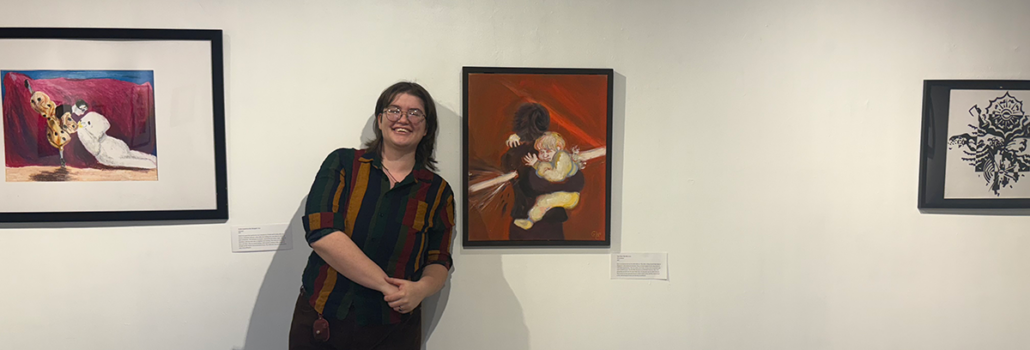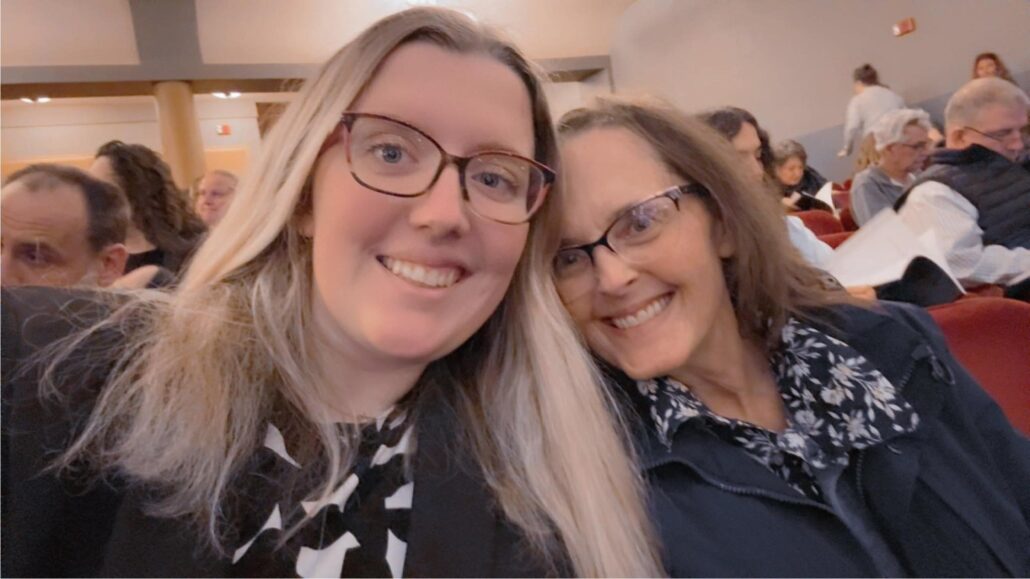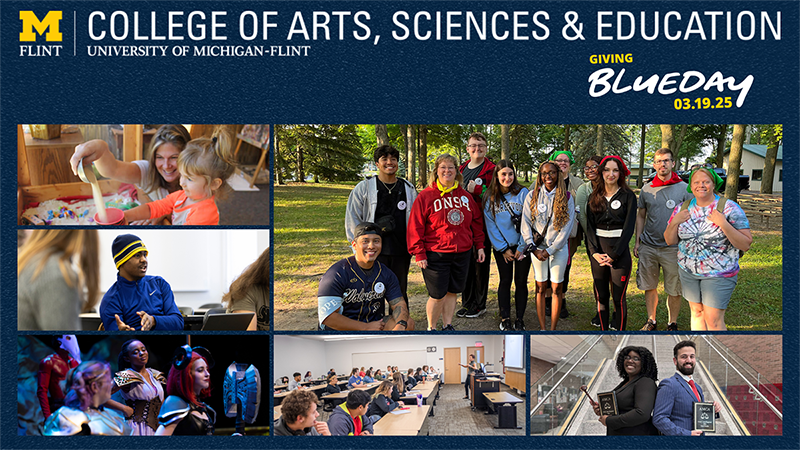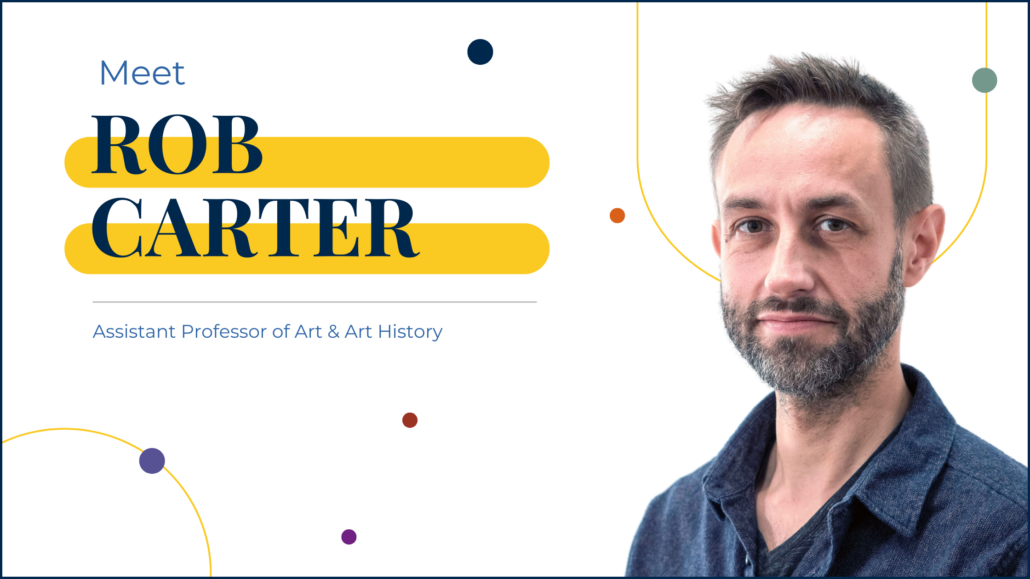Connecting with literature, Flint, and ourselves
During a nine mile pilgrimage around the city on December 5, UM-Flint students reclaimed public space while considering important questions about the city’s – and our own – history and future.
The event was the culmination of the First-Year Experience course Finding Your Way: The Literature and Practice of Walking, taught by Associate Professor of English Mary Jo Kietzman. She developed the course to provide a unique way for students to dive deeper into literature, explore the community in which they study, and take time for self-reflection. Throughout the semester, students “tried on” the ideas of different authors while walking. Just as Thoreau found inspiration from literature while living and working at his cabin, so too would UM-Flint students build their own literary ideals while in motion.
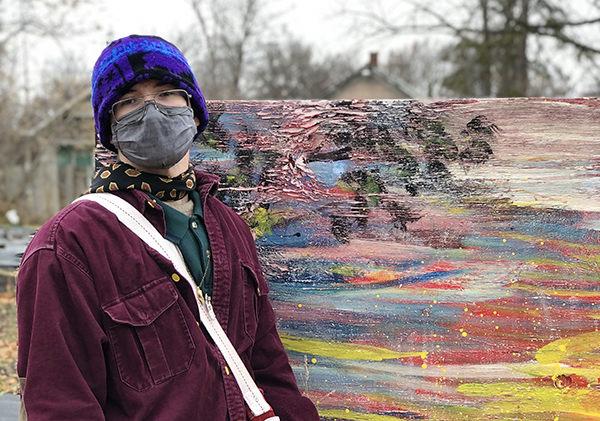
Once that analytical and self-reflective groundwork had been laid, it was time to take those skills into the Flint community. While exploring the city, students would think deeply about the history of the city in which they study. “How would the university experience change if students began by seeing themselves as pilgrims?” Kietzman explains, “searching for what is sacred to each of them…Wouldn’t their learning mean more?”
The highlighted destination of this year’s pilgrimage was the Buick City brownfield, which was once a huge complex of factories employing upwards of 28,000 people. Students in the course suggested that the route take them around the perimeter of the brownfield, and that they walk that portion in silence. One student was overwhelmed with emotion seeing the brownfield, thinking about her grandparents and great-grand parents who worked in the auto factories.
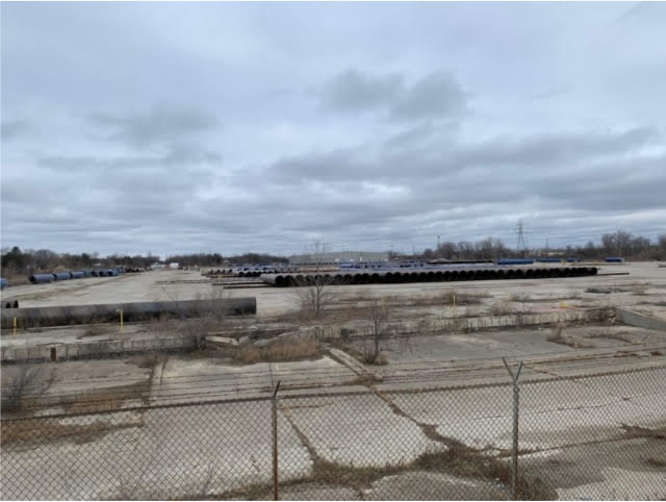
The midpoint of the pilgrimage was St. Mary’s Catholic Church on Flint’s East side. There, students reflected by “Mary, Mother of Flint” – a black madonna painted in response to the water crisis. The class was also greeted by Father Tom Firestone, affectionately known as “the Pope of Flint.” Firestone described the simple importance of being present in the city, stating that “we aren’t leaving.”

For Guido Marasco, an undecided major, the pilgrimage was an opportunity to find familiarity in the unknown.
“Through our class lectures and our walks together, I’ve realized that Flint isn’t as unknown of a place as I thought it would be. I chose UM-Flint because I wanted to be close to home, and what’s funny is that I never had to leave it to begin with … I was always here, it just took some getting used to.”
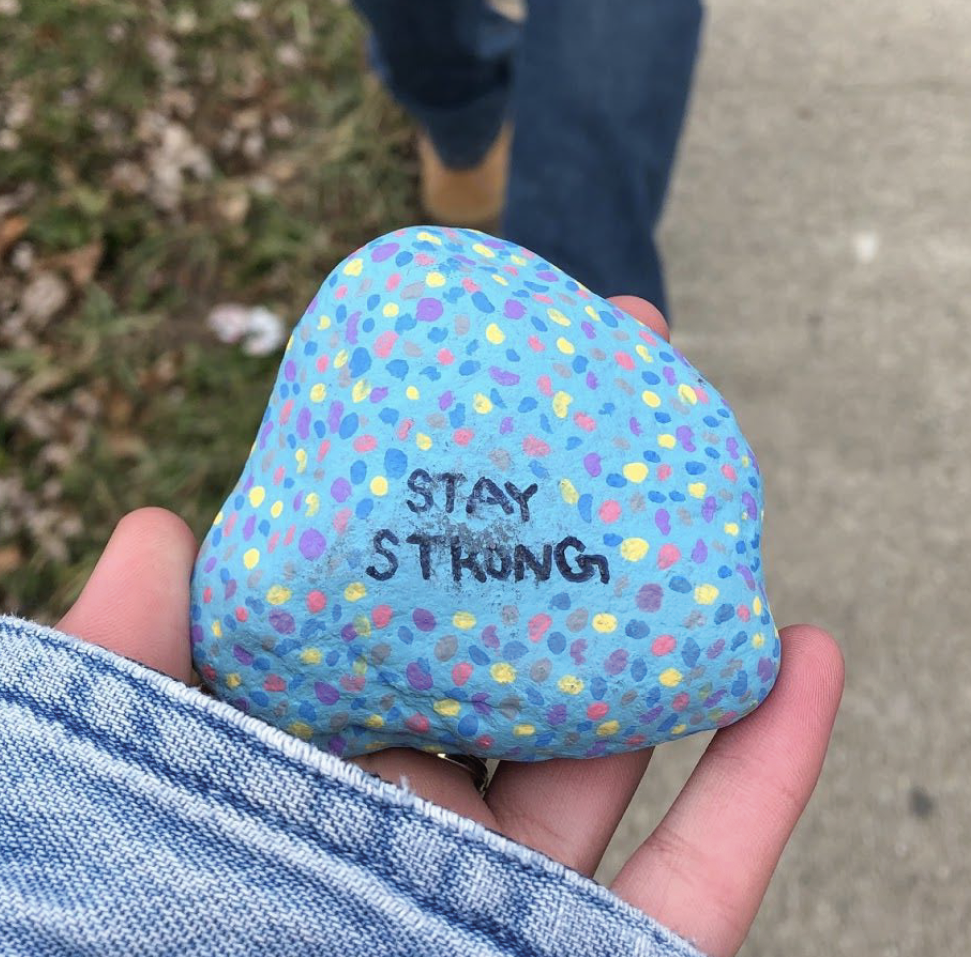
Kietzman says that her students felt like walking together made a huge difference to their sense of place and their feelings of connections to the city and to one another. One student explains, “I had one other face to face class, and I knew who the other students were, but I didn’t know them like I know the students in this class. In this class, I know the stories of my peers and my teacher.”
In reflecting on his experience after the pilgrimage, Marasco concludes powerfully that, even in different surroundings with different people, things aren’t so different after all – and comfort can be found in the simplest of places.
“When we walked, I looked around a lot, and found that the city is flooded with things I feel most comfortable around: colors, expressions, nature, symbols of perseverance. All of these things hold a special place in my heart, and through mapping Flint I was able to re-discover and re-experience some of the initial emotions I had when I realized what made me comfortable.”

